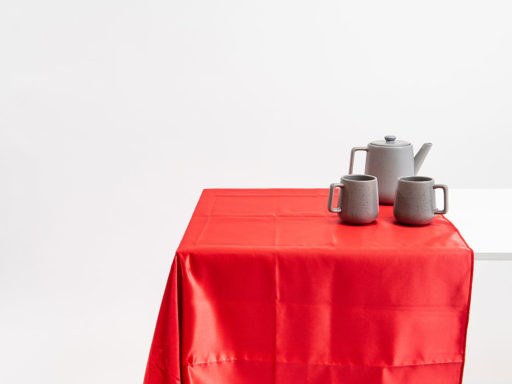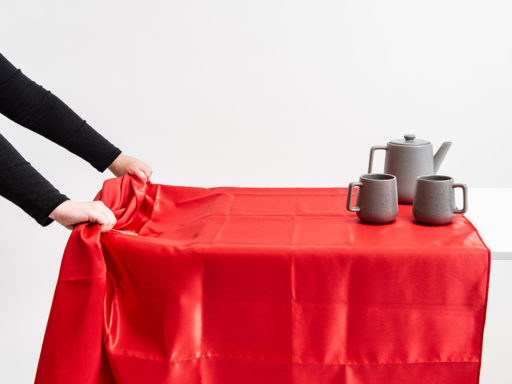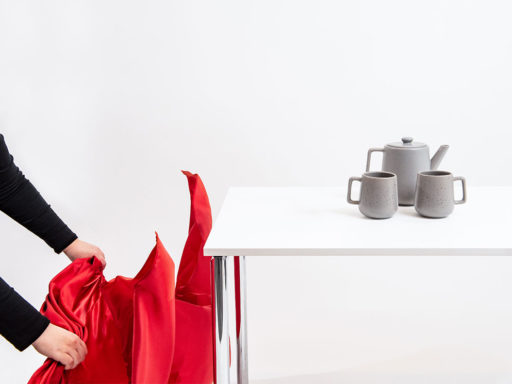Magic tricks might not be an obvious place to look for science, but in reality a lot of tricks rely on manipulating the laws of physics to achieve a surprising result. This activity shows how to harness gravity, friction and motion to produce the well-known tablecloth trick.
Printable downloads
Follow these steps…

-
 Place the shiny tablecloth on the table, leaving half of the cloth hanging over the side (make sure the table has norough edges).
Place the shiny tablecloth on the table, leaving half of the cloth hanging over the side (make sure the table has norough edges). -
 Put the cups and teapot on the tablecloth at the edge of the cloth. Make sure the tablecloth doesn’t have a raised hem.
Put the cups and teapot on the tablecloth at the edge of the cloth. Make sure the tablecloth doesn’t have a raised hem. -
 Grasp the overhanging part of the tablecloth in your hands tightly. Before you pull, make sure the cloth is still smooth and there aren’t any air bubbles underneath.
Grasp the overhanging part of the tablecloth in your hands tightly. Before you pull, make sure the cloth is still smooth and there aren’t any air bubbles underneath. -
 In one fast movement, pull the tablecloth towards you and down. The cups and teapot should stay where they are!
In one fast movement, pull the tablecloth towards you and down. The cups and teapot should stay where they are!
Think and talk about…
- Why do the cups and teapot not move?
- What forces do you think are acting here?
Investigate…
- What would happen if you used a different fabric for the tablecloth
- What about if the cups were heavier or lighter? Does this affect the trick?
- Does the speed you pull out the tablecloth make any difference?
Did you know?
When you rub two sticks together, it’s the friction between the two surfaces that transforms the movement (kinetic energy) into heat (thermal energy) and starts a fire.
What’s the science?
The tablecloth and the table are both smooth – there isn’t much friction between the two. So when the tablecloth is pulled away, it can slide out easily from under the crockery. The only force acting on the cups and teapot is gravity, pulling them down onto the table.
This trick helps us understand inertia. Inertia is the tendency for an object to remain at rest until a force acts on it. As there is no external force pushing or pulling on the cups and teapot, they stay where they were.
Science in your world
 Inertia can be experienced in lots of everyday situations. When you are standing in a moving bus you lean forward when the brakes are applied suddenly. This is because your body is in motion along with the bus. When the bus stops quickly, the lower part of your body comes to rest along with the bus, whereas the upper part of your body continues to move forwards.
Inertia can be experienced in lots of everyday situations. When you are standing in a moving bus you lean forward when the brakes are applied suddenly. This is because your body is in motion along with the bus. When the bus stops quickly, the lower part of your body comes to rest along with the bus, whereas the upper part of your body continues to move forwards.



